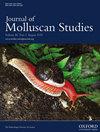Population size and movement ecology of intertidal gastropods on rocky shores and seawalls in Singapore
IF 1.2
4区 生物学
Q2 MARINE & FRESHWATER BIOLOGY
引用次数: 0
Abstract
Increasing coastal development and global warming have resulted in large-scale habitat changes, with artificial coastal structures replacing extensive tracts of natural shores. In Singapore, for example, more than 63% of the natural coastline has been replaced by seawalls. Multiple studies from both temperate and tropical regions have compared species diversity supported by these artificial structures with natural rocky shores. Few, however, have estimated and compared the population size and movement of common intertidal species between these two habitat types. Using mark–recapture techniques, this study investigated: (1) the population size of three common gastropod genera (Nerita spp., Trochus spp. and Turbo spp.) and (2) differences in displacement of Nerita spp. and Trochus spp., two common species found on natural rocky shores and seawalls in Singapore. The results of our mark–recapture surveys indicated that seawalls supported large densities of Nerita spp.—more than 50 times greater than that on adjacent rocky shores. The mark–recapture data also revealed that movement of the gastropod species differed between the two habitats, with individuals on seawalls generally travelling longer distances.新加坡岩石海岸和海堤上潮间带腹足动物的种群数量和运动生态学
海岸开发的加剧和全球变暖导致了大规模的生境变化,人工海岸结构取代了大片自然海岸。例如,在新加坡,超过 63% 的自然海岸线已被海堤取代。温带和热带地区的多项研究都比较了这些人工结构与天然岩石海岸所支持的物种多样性。然而,很少有研究对这两种生境类型中常见潮间带物种的种群数量和移动情况进行估计和比较。本研究利用标记-重捕技术调查了:(1)三种常见腹足类(Nerita属、Trochus属和Turbo属)的种群数量;(2)在新加坡天然岩岸和海堤上发现的两种常见物种Nerita属和Trochus属的迁移差异。我们的标记重捕调查结果表明,海堤养育了大量的 Nerita 鱼属--比邻近岩岸的密度高出 50 多倍。标记-重捕数据还显示,腹足类物种在两种栖息地的移动有所不同,海堤上的个体通常移动的距离更远。
本文章由计算机程序翻译,如有差异,请以英文原文为准。
求助全文
约1分钟内获得全文
求助全文
来源期刊

Journal of Molluscan Studies
生物-动物学
CiteScore
3.00
自引率
8.30%
发文量
36
审稿时长
3 months
期刊介绍:
The Journal of Molluscan Studies accepts papers on all aspects of the study of molluscs. These include systematics, molecular genetics, palaeontology, ecology, evolution, and physiology. Where the topic is in a specialized field (e.g. parasitology, neurobiology, biochemistry, molecular biology), submissions will still be accepted as long as the mollusc is the principal focus of the study, and not incidental or simply a convenient experimental animal. Papers with a focus on fisheries biology, aquaculture, and control of molluscan pests will be accepted only if they include significant advances in molluscan biology. While systematic papers are encouraged, descriptions of single new taxa will only be considered if they include some ‘added value’, for example in the form of new information on anatomy or distribution, or if they are presented in the context of a systematic revision or phylogenetic analysis of the group.
 求助内容:
求助内容: 应助结果提醒方式:
应助结果提醒方式:


